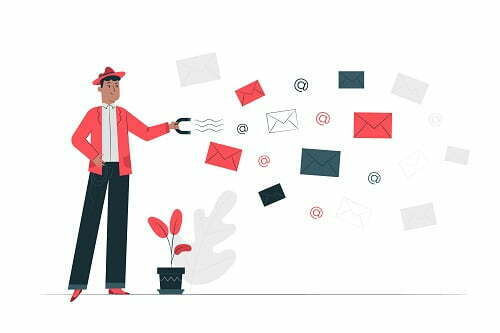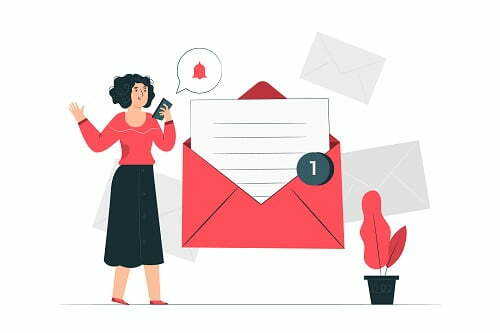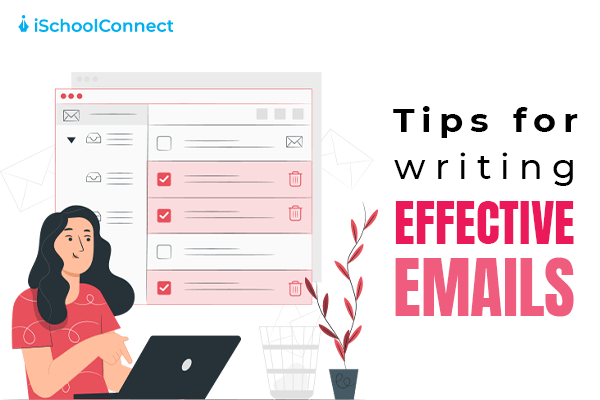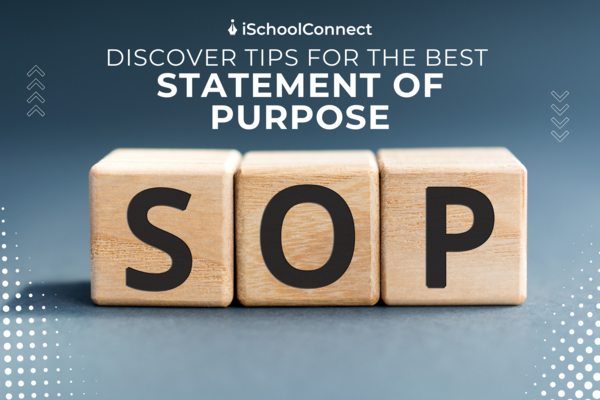Table of Contents
We bet you’ve written hundreds of emails in your life, but there are still a few things you don’t know. Like who sent the first email, what are the different types of email formats, what not to include in an email, how to make it enticing, etc. We have covered all this, and so much more, in our blog. So what are you waiting for? Let’s get started!
#6 What is an email?
An e-mail, also known as an electronic mail, is a message that is sent from one internet user to another, and stored in their virtual mail boxes so they can read and respond to it at a convenient time. This message can contain text, files, images, videos, or other attachments and can be sent to not just a specific person, but also to a group of people.
#5 What are the types of email formats?
We send and receive so many emails on a day-to-day basis that it’s easy to get confused about the standard email formats. To help you understand them better, we will carefully take you through the three different types/formats of email. Each has its own set of benefits, drawbacks, and best-case scenarios.

Email in plain text (Basic email)
An emails sent in plain text has the most basic format. This email contains no images, colors, formatting, hyperlink, or markup. It is formatted through the use of single line breaks and spacing.
Unfortunately, this type of an email can appear to be a little dull, since you can only use one font. You also can’t make the text bold or italic or use any other tools to make it look appealing. But that doesn’t mean you should decide against using this format.
You first need to understand your audience. Plain text emails work really well when you’re interacting with your personal contacts or your peers at work. They also work well in the B2B setting, where you are interacting with companies who are your clients. But if you are sending out B2C emails, you will need to create something more appealing.
Rich text email
Rich text emails are a level up from plain text emails. They allow you to make text bold and italic, and even change the color of text, resize it, and so on!
You can change the font you’re using in an email, but this has its own set of restrictions-
- The font you choose must be available on the recipient’s computer, or their machine will use a fallback font.
The downside to sending this sort of email is that it doesn’t appeal to the formal (B2B) audience. This is because it offers creative fonts and different styles that are less likely to be taken seriously.
HTML-based email

HTML email has by far the most versatile format-
- You can include a header, a footer, background colors, and logos, and other images.
- It lets you creating clickable buttons, which is much better than just adding an attachment.
It is largely used in marketing and advertising as they concentrate more on drawing the user’s attention. Moreover, it looks not only attractive but also provides the reader with the necessary information.
But the major disadvantage of the HTML email writing format is that it necessitates a significant amount of coding. It also entails more testing to ensure that the emails will function properly in your recipient’s system. As a result, they’re rarely a good idea for daily conversational emails.
#4 How to write an effective email
Every email you send has the potential to strengthen your relationships. This is why we’ve put together a guide that deconstructs the necessary components of an email. You’ll be well on your way to creating successful email campaigns with this helpful information) a skill that will be a bonus for your resumes in no time)!
‘From’ label
To begin, we’ll look at the ‘from’ label.

Everyone notices the source of a business email writing format because it’s the first thing they see when they scan their inbox. This is because the label is a valuable piece of the inbox real estate. So make sure it matches your name or whoever your recipient signed up to hear from when they subscribed to your list.
Subject line
When an email arrives in your inbox, you make a split-second decision about whether to open it or not. The subject line is one of the factors you consider when making this decision. The same will be true for the ones who receive your email.
Hence, it’s super important to write a crisp and enticing subject line for your email. You could provide your customers with the best deal, or share the best information in the world. But if your subject line is poorly written, they won’t get far enough to take advantage of what’s inside.
Pre-header
After the subject line, the grey text is pre-header, which is also sometimes known as the preview text. This also acts as a companion to the subject line and is your email’s first line of text.
The pre-header is included right after the subject line in some email programs, such as Gmail or mobile phones. It helps the reader get a little more information on what the email is about before opening it. So it must be written just as carefully as your subject line.
CTA (Call to action)
Every email’s goal is to persuade its recipients to take some sort of action. A clear call to action makes it easy for the recipient to follow through, whether you want them to engage in your services or complete an online survey.
You could include a “Buy Now” button in the email letter writing format if the requirement is to make a purchase. Or you could use CTAs like “Apply now,” “Download now,” “Register now,” based on your requirements and the context of your email.
Pro tip: When adding a CTA, always include a link that directs them to the right page. Remember, the easier you make the process for them, the more likely they are to oblige.
Social media share buttons
To grow your brand, people need to know about your presence on social media. This is why social media buttons are another important element that you should add in your email.
So make it simple for them to check out your handles if you want them to engage with you as much as possible. Inform your readers that they will find your social media handle below and add the icons of each handle with a link.
#3 Things you should never include in your email

Yes, email is a quick, direct, and efficient form of communication. But as you conveniently use it, remember that unlike physical mail, you cannot lose an email. It’s a permanent record that will be saved indefinitely, even if it’s deleted from a specific account. As a result, even a single sentence in an email can be used against you.
Here are a few things you should never include in an email-
- Offensive words.
- Acronyms such as LOL, OMG, TTYL, etc.
- Sentences in all caps.
- Jokes.
- Emojis.
#2 Key points to remember
Mind your tone
An email should provide users with direct information in a formal, educated, and diplomatic tone. Anything besides that, such as fierce words or an untimed sense of humor, will just ruin the purpose of the email.
But keep in mind that the tone of your email can change depending on who your audience is and what you want them to do. For example, a formal email would perform well in certain marketing fields, while in others, an informal tone will do better.
Pro tip: To gain a clear understanding of this, get know your audience by sending out a few test emails and see how they perform.
Check the grammar
People who send an email should avoid conjecture, musing, or improper grammar. Apart from being unprofessional, it reflects laziness. An email that is perfect in grammar communicates better with the audience and creates an impact. So always proofread your emails and make sure there are no grammatical errors.
Don’t add any personal information
Personal information, as well as anything else that isn’t entirely business-related, should be avoided in business email writing format. This category includes activities such as venting, sexting, and writing about any pet peeves you may have about your coworkers.
Always keep your professional guard up or it will reflect poorly on you and the company.
#1 An interesting fact
Ray Tomlinson sent the first test email to himself in 1971.
The message had the text “something like QWERTYUIOP.”
Although he emailed himself, the message was still sent over ARPANET.
- The alias, user, group, or department of a company is found in the first portion of all email addresses, the part before the @ symbol.
- Following that, the “@” (at sign) is an email address divider; it is required for all SMTP e-mail addresses since Ray Tomlinson sent the first email writing format sample.
- Finally, the domain name of the user’s home could be simply Gmail or their website address. ” The TLD (top-level domain) for the domain is “.com.”
This is all we have. For now, we hope you liked this blog and found it informative. If you have any doubts you can get them clearer by contacting us. Or you can also comment below and share your thoughts!






